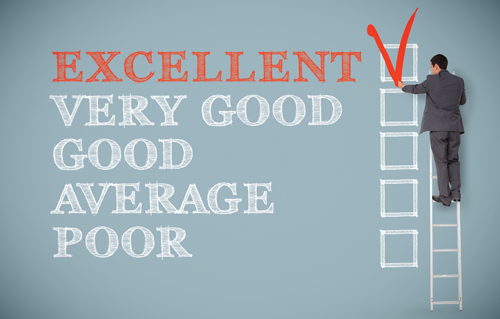Building a value-added proposition
Fine tuning your go-to-market strategy to stay relevant
By Dominic Telaro

Here is a question all distributors need to ask themselves – are you a commodities reseller or a value-add reseller? One quick way to find out is based on customer loyalty.
Ask yourself:
- Am I the lowest priced distributor for this item?
- If I raise my price higher than my competitors will I lose the sale?
If the answer is yes to both questions then the chances are very high that you are a commodities reseller.
If you were a value-add reseller then the answer would have been an immediate “no” to question No. 1 and a resounding “absolutely not” to question No. 2.
Being a commodities reseller may be your go-to-market strategy and has served you well over the years. However, the market is changing quickly with customer and vendor expectations leading the way.
The worst (or best, based on the glass-half-full or a problem-is-an-opportunity mindset) is that you have no control over the majority of the changes taking place.
Some examples of market changes are:
- Consolidation
- Offshore sourcing
- Near shore sourcing
- Lean operations management applications
- Shorter lead times (vendor and customer)
- Rising costs
- International competition
- Corporate procurement governance
- Government governance
- Much more
A distributor has no control over the changes listed above. If you are a commodities reseller, your hands are tied and margins will be affected negatively.
Pick one example – Consolidation
Why would consolidation effect margins negatively? Two companies merge and one of
them was your customer. The consolidated procurement team begins a vendor consolidation project and is reviewing and analyzing its two distributors.
Distributor No. 1 has the best price for the item.
Distributor No. 2 is slightly more expensive (just a couple of points) but has a team that can assist with training, can manage the customer inventory, can commit to allocations, has complementary products and a service desk available 24/7.
What is the value-add for distributor No. 1? None, just the lowest price.
Will procurement only look at the best price while making their decision? Are there any services on distributor No. 2’s list that will more than compensate for the price differential?
Supply Chain
Supply chain is a factor that also needs to be considered to allow a distributor to progress from a commodities reseller to a value-add reseller. The distributor is really the one that manages the supply chain complexities for all parties. This is not a choice but a requirement.
Both manufacturers and customers expect you to be the buffer that minimizes their supply chain risks:
- Force majeure
- Workforce disruptions
- Transportation
In many ways, the distributor is seen as the “security blanket” and is expected to navigate and minimize any upstream or downstream supply chain disruptions.
I expect that many manufacturers and distributors are willing and able to negotiate with a distributor that can help with their supply chain complexities.
The market today is divided
three ways:
- Manufacturer
- Distributor
- Customer
Below is a simple product lifecycle:
- The manufacturer invents, enhances and builds.
- The customer is the end-user and consumes all products.
- The distributor is the middleman that is squeezed out of profits by both the manufacturer and the customer.
- The manufacturer expects the highest payment for its product and the consumer expects to pay the least for the product.
- The distributor is the part of the supply chain expected to connect both the manufacturer and the customer.
- If you add value to the process, the equation changes and the manufacturer forfeits some of the dollars for a distributor that supports its product with more than a direct pass through.
- The customer is willing to pay more to a distributor that is a real trading partner and adds more value to the product than a direct pass through.
Change
How can you change your go-to-market strategy and add value for all your partners, manufacturers and customers alike?
One very effective method is with a Customer Advisory Board. The CAB would consist of a small group of valued customers and manufacturers including new customers, long-term customers, lost customers and customers who have shown a decline in their purchasing activity.
We all understand the importance of information gathered from new and existing customers. However, I strongly recommend talking with some customers and manufacturers you have lost during the previous six to 12 months and customers whose purchasing patterns are showing a steady decrease. These last two groups are usually open to discuss the reasons for their disengaging with you and can give you valuable insights into why you lost their patronage. The lost partners would have a one-time invitation and would not be active members of the CAB.
A CAB meeting can range in atmosphere from being an around-the-campfire, “I love you, you love me” singing event, to a nasty exchange of issues and finger pointing.
Most often, the CAB meeting is cordial but will reveal issues that you would never have considered important or relevant. The results are not always easy to accept and can range from simple process flow realignments to expensive and complex go-to-market
strategy redirection.
The expected inputs from a CAB is to advise and direct the company. The expected results from a CAB is to present change and provide information for vision and strategy.
Effective CAB meetings should provide short-term and long-term opportunities for value-add services that can increase a distributor’s margins/profits.
Self-Assessment
Another approach to considering value-add services is to ask yourself, as a consumer, what you consider value-add services? Most people do not always buy the cheapest price. That being the case, list some items with additional services that you purchase and value enough to pay extra and identify why.
As you create this list you may find commonality between the CAB results and your personal list. In the end we are all consumers and have pre-set expectations from our vendors.
Potential value-add opportunities
- Manage warranty repairs
- Online manuals
- Online training
- 24/7 live support
- On-site support
- Quality reputation
- Country of origin
Begin with the assumption that if you are willing to pay extra for an item based on the perceived and received value-add, chances are good that your customer will feel the same.
Value-add also implies that if I pay extra for an item/service at time of purchase, then I should not have to incur extra costs after purchase to cover this same value-add. During this process you will discover that the CAB also shares many of the same views.
Once this iterative and regularly recurring analysis is complete, the real work begins.
- Are you ready to move to this new model financially?
- Are your cost models based on accurate data?
- Are you ready to move to this new model operationally?
- Are you ready to deal with the competitive issues this may cause?
- Does the CAB recommendation represent the majority of your customers?
- Have you contacted your customers to discuss this potential go-to-market change and how it would affect them?
- Can you present a realistic “what’s in it for you scenario” to your customers?
- Can your sales team manage the change and represent it properly?
- Are you ready?
Conclusion
Is this go-to-market change necessary for distributors? Yes! The market is changing, the requirements are changing, and your go-to-market must change.
This approach does not require that you become the end-all solution and the “most” value-add distributor. This approach simply states that you need to move away from simply being a commodities distributor and move to a higher partner level with your vendor and customers, which will build value and loyalty.
Commodities distributors will find themselves low man on the totem pole and will be squeezed out of the market by continuously lowering margins. They are usually viewed as the backup supplier and therefore receive very low loyalty ratings from their customers. And they will find themselves hard pressed to survive, let alone grow.
Value-add distributors, on the other hand, are looking at a bright future.
 Dominic Telaro is director of industry solutions for I.B.I.S. Inc. He spent half of his career working for distribution and manufacturing companies as master production scheduler, production and inventory manager and director of materials management. In the software industry he has been vice president of sales and marketing for software and implementation consulting companies.
Dominic Telaro is director of industry solutions for I.B.I.S. Inc. He spent half of his career working for distribution and manufacturing companies as master production scheduler, production and inventory manager and director of materials management. In the software industry he has been vice president of sales and marketing for software and implementation consulting companies.
This article originally appeared in the Nov./Dec. 2013 issue of Industrial Supply magazine. Copyright 2013, Direct Business Media.













